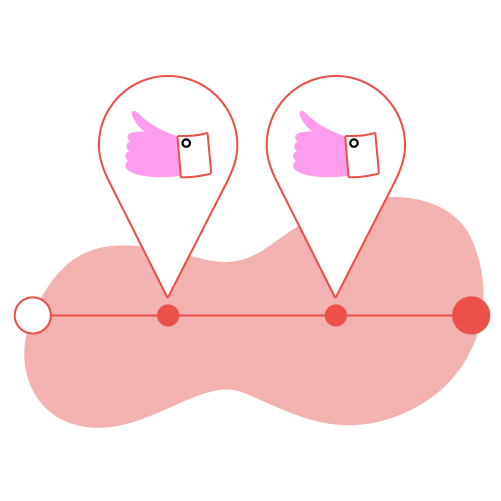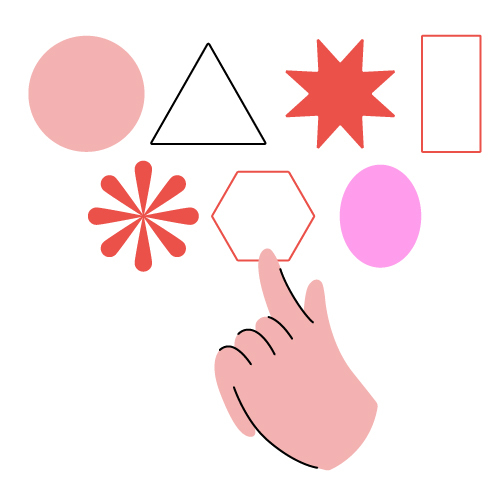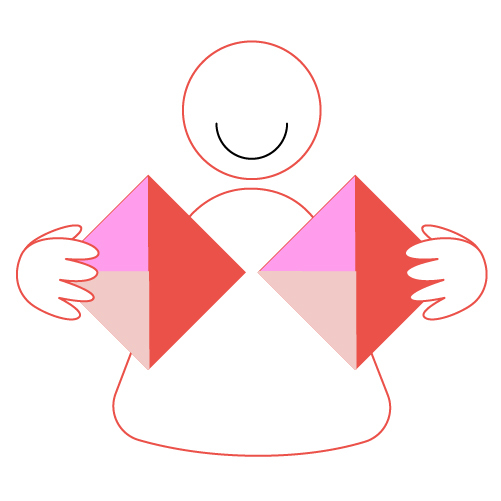
Using Human-Centred Design
How to bring people into the strategy process
Introduction
Our mission is to improve people’s lives. To do this, we need to empower people, understand them in their cultural, contextual and cognitive dimensions, and keep them at the centre of our methods and mindset as much as possible.
In the course of our work, it can be tempting to simplify things by removing human factors or letting assumptions about people guide what we do – the assumptions and biases we all have, as well as the everyday personal and professional demands competing for our attention. We’re only human ourselves! Human-Centred Design (HCD) is an approach to problem-solving that puts people at the centre of the process from beginning to end.
Is HCD a mindset or an approach?
There are debates about whether HCD is a mindset or an approach. Well, it can be both. As a mindset, HCD takes the position that problems are best identified and defined by the people who face them in the first place and that solutions are best developed directly with these people. Furthermore, a human-centred mindset believes that community voices and perspectives must be involved systematically from beginning to end, from programme inception and design through to evaluation. As an approach, HCD is a methodical means to uncover insights, discover solutions, and iteratively test and adjust them in context.
When should you apply HCD?
Communities know their own needs best but may lack the tools to turn their insights into action. This is where HCD is most useful. The most effective way to put HCD into practice is when the community members themselves define their needs and design their own solutions. To support this, it is critical to strengthen community capacity in ownership of participatory approaches (see also Community Engagement: Partnering with communities so they can lead the change process). Each community can then take the lead on defining the priorities and problems to address and start to design a long-term plan for which they may seek external partnerships. UNICEF’s role is to provide systematic support for these stakeholder-led, participatory processes of inquiry, problem definition, solution design and implementation.
Our guiding principles
UNICEF has developed 6 guiding principles for a human-centred approach, based on emerging evidence from the sciences of human cognition and behaviour.
- Small is big. We tend to overlook the small stuff, like the inconvenient barriers of dealing with health programmes. Because people don’t always make reasoned calculations weighing costs and benefits, the small stuff can dominate decision-making.
- Knowing is not enough. Knowing about a risk, technology or service, or having an accurate understanding of the benefits of a certain behaviour, does not necessarily translate to behaviour change or service utilization. When we accept that it is possible to alter behaviour without changing minds, we open ourselves to more innovative solutions.
- Attention is elsewhere. Most people, most of the time, are not thinking about best practices or the behaviours we are promoting. And when they are, it’s not often a deep reflection. If we remind ourselves that most people spend little time thinking about what they do, we will ask less of users and make our programmes easier to use.
- Context comes first. A singular focus on behaviour change communication can be misleading. Changing the context in which people behave is often more effective than directly asking them to do things differently.
- Truths are buried. What people believe, say and do can be three different things. How we explain our own behaviour is not always accurate. This makes it critical to disentangle what people self-report about their behaviours from observations about what is actually happening.
- Intentions are not actions. Intentions can be poor predictors of corresponding actions. Behaviour depends as much on removing the barriers to taking action (making things easier) as it does on changing hearts and minds.
Solving with people, not for people
So how do we make sure that we put people at the centre of our work?
While each organization or designer may have their own particular approach, by and large HCD methodology entails a similar structure and process. To demonstrate, we are going to look at four in particular. Each one adopts similar methods and tools to achieve people-centred insights and results.
Some may be familiar to you; you may realize that you have been employing a human-centred mindset already. There are many parallels with longstanding community-based approaches and participatory methods. Others may be new, and these might spark some ideas for how to approach your next problem-solving task in a more human-centred way.
HCD is fundamentally about keeping the needs and voice of the people we are trying to reach at the centre of the entire process. In the following illustrations, you will see how those voices can be brought in using different methods and tools along the way.
Popular models for the HCD process![]()

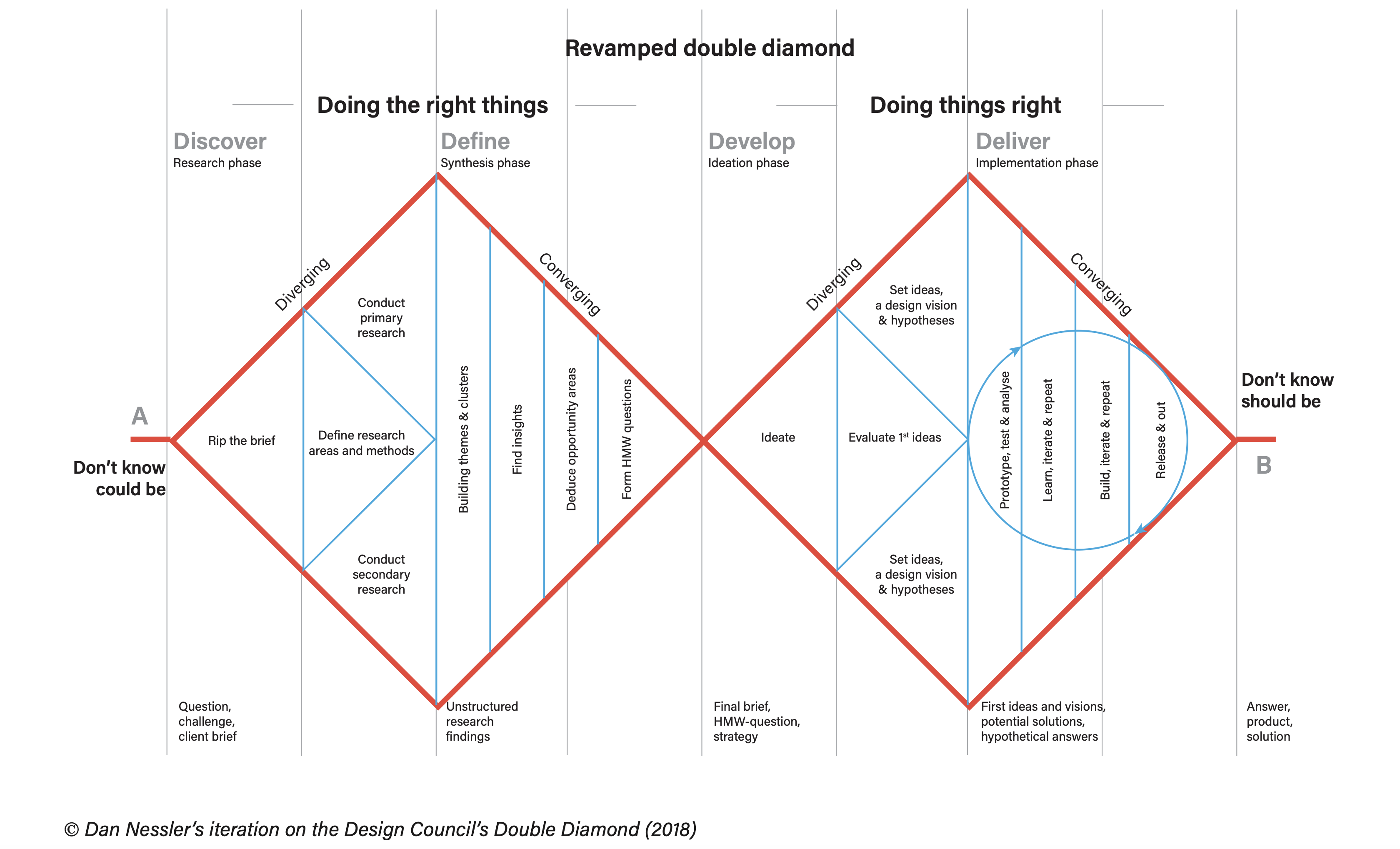

Strategies and tactics
Some of these tools and methods may not feel new – because they’re not! Working in a human-centred way is not entirely novel, but it has only recently been packaged as a distinct methodology and set of tools.
| Empathize | Collaborate | Design and refine |
|---|---|---|---|
Objective | To gain deep insight into the community or people we want to reach, in order to understand the context to design for – the needs, barriers and opportunities that influence their lives and decisions | To keep community needs and desires at the centre of the project, ensuring that community voices either lead or co-lead on the way to developing a solution | To learn more from the community by testing out our ideas and continually iterating on any emerging concepts with community input; to understand how desirable and feasible our concepts are |
Tools + methods |
>link to Collecting BI tool >link to Diagnosing the Situation tool |
>link to UNICEF HCD Kit |
>link to Measure and Learn tool |
Considerations | Consider redefining the challenge, scope, objective or desired impact in response to what has been learned
>link to the 5 Whys exercise | Consider how much power to give the community in the development of the solution, and the impact of this on the process
See the Spectrum of Participation below | Consider the need to keep ideating on the solution beyond the traditional scope and timeline of a project |
Consider the spectrum of participation
Ceding power to the community during any problem-solving process (otherwise known as ‘participatory design’ or ‘co-creation’) is a foundational step towards success. It is crucial for project owners to create a space for collaboration that allows the agency of the community to define priorities and shape their own solutions. It is very likely that you and your colleagues already have experience in this; you have probably already been using a human-centred approach by another name.
Consider how engagements have proved successful or unsuccessful in the past; or if the community is new to collaboration, then you need to find out what will work for them. The following variables are among those that need to be considered:
Community leadership (this is a priority; how can you support this?)
Environment (where the work will be done; where will the community be comfortable?)
Materials (what ways of creating are natural to the community?)
Language (how can you communicate the process and objectives in a way that resonates with the community?)
Participants (think about power structures, ethics and consent; consider how people might behave with ministry officials or strangers observing them)
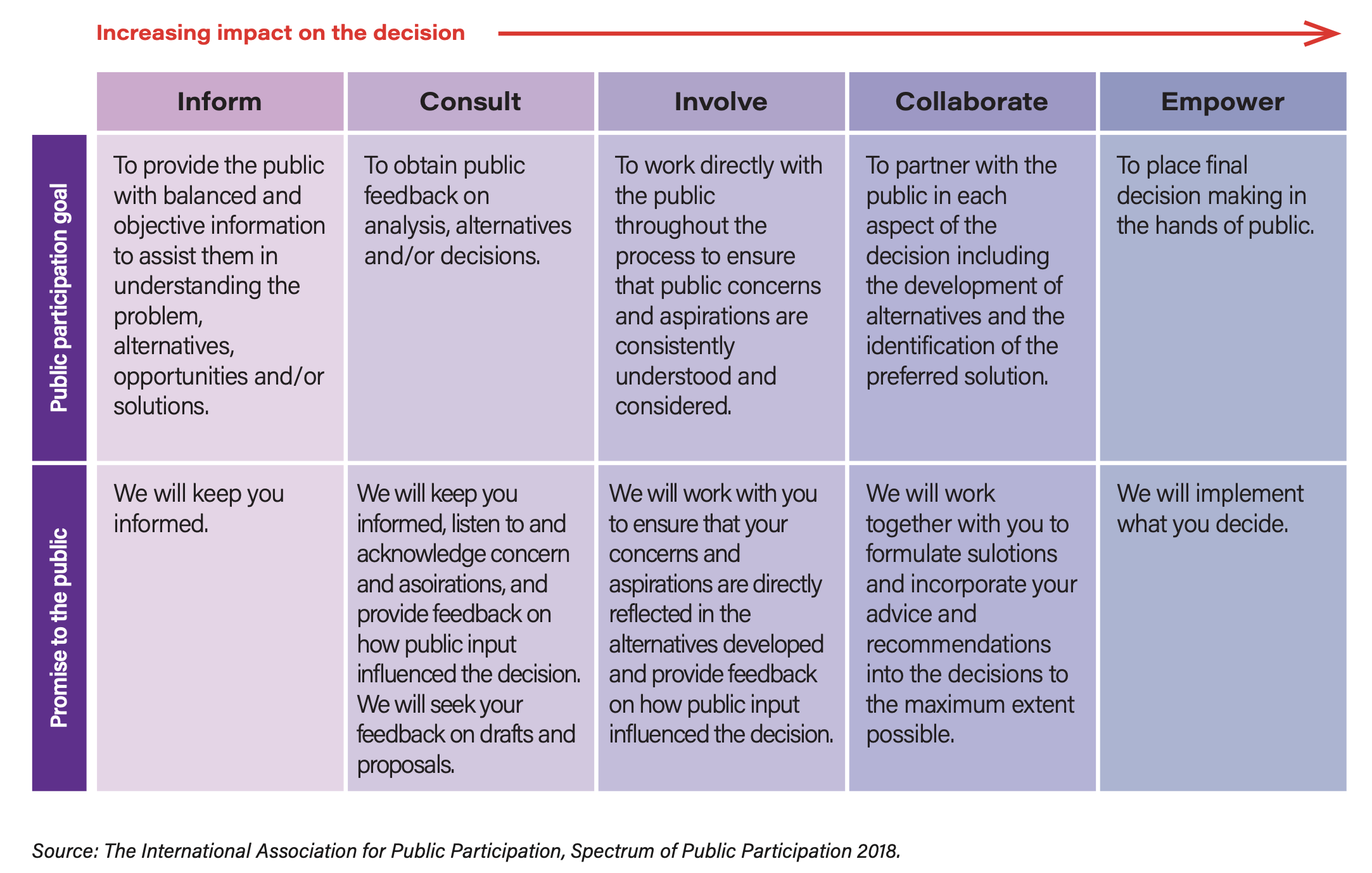
A framework for assessing solutions
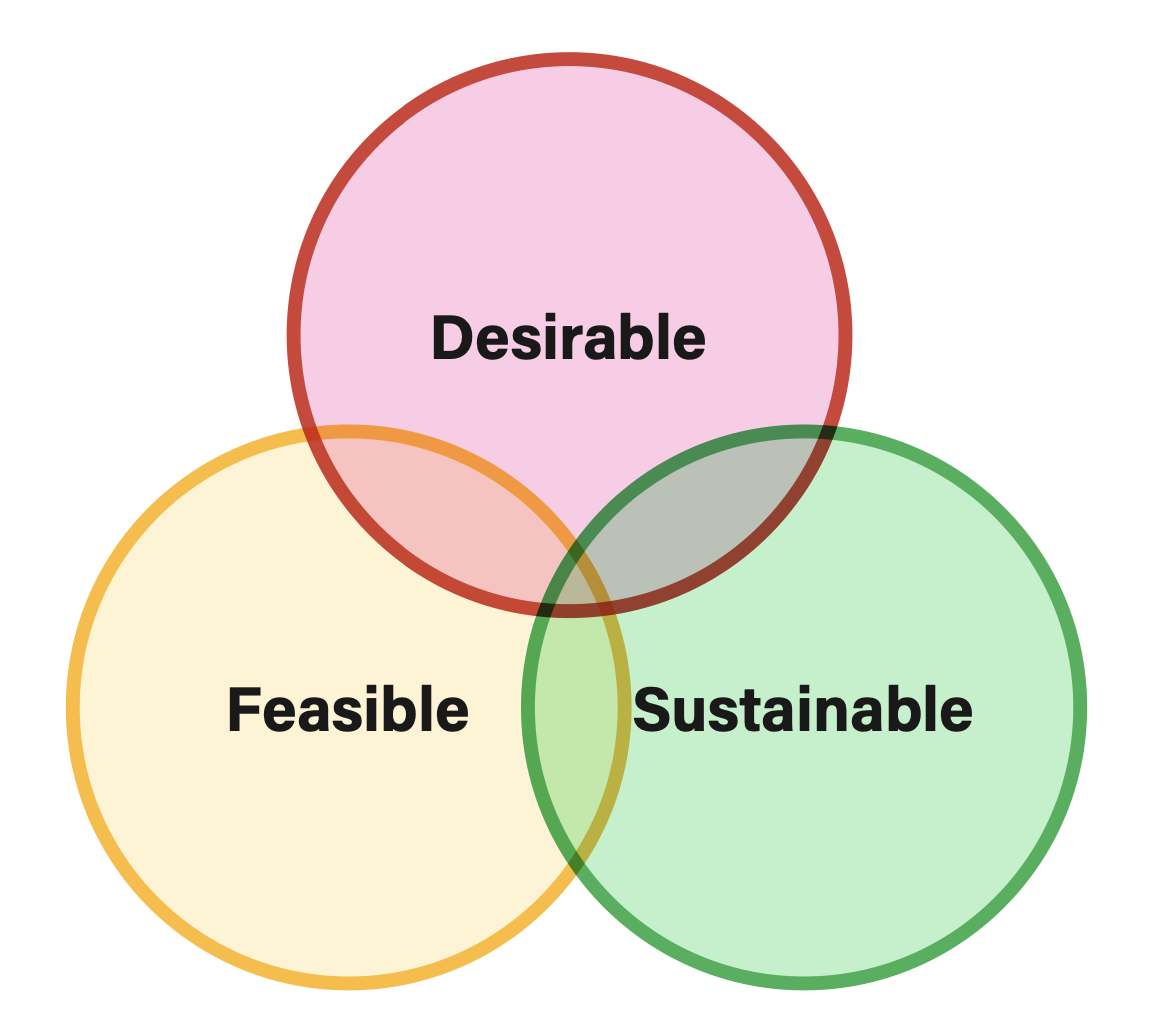
A successful solution has all three of these qualities: it is desirable, feasible and sustainable. An HCD approach starts with desirability. By first finding out which problems people want to solve, and which solutions they want to use, feasibility plans and sustainability plans will not be developed in vain.
Examples of success using Human-Centred Design
➔ Just add empathy: Making circumcision sexy to coloured males in Cape Town, South Africa
Voluntary Medical Male Circumcision (VMMC) is a key preventive strategy in the quest for HIV epidemic control; but certain populations remain difficult to influence particularly with an invasive intervention like circumcision. In Cape Town, the struggle is current: how do we get at-risk men to want this procedure? Inspired by HCD’s emphasis on empathy, the project team wanted to understand if the running ManUp! Campaign was resonating with men in Cape Town and to get a deeper understanding of Cape Town Men's lives to further refine it. The project team used direct immersion with three men, three women and three boys to better understand their lived realities. Insights were used to refocus the key messages to VMMC providing sexual confidence rather than a social responsibility. The revised campaign tested with the target audience indicated that the message now resonated and more than 90% of the survey participants indicated that they would be interested in getting circumcised. The immersion identified how to position the communication to reach the target audience and expanded the social mobilizers' understanding of their audience.
➔ Giving girls in India agency over their futures through empowerment tactics
Restless Development India works with government and business partnerships to support young people and their communities. Currently focusing on building brighter futures for young women and girls, it provides dedicated STEM classes for girls in school facilitated by young professional women in this sector, as well as building capacity for youth-led campaigns for gender equitable policy making. The latter is facilitated by training young volunteers to become Youth Accountability Advocates who identify priority issues in their communities, build coalitions and partnerships to tackle them, lead campaigns for local and national change, and hold decision-makers to account. Youth volunteers are currently being empowered in Delhi, Patna, Ranchi and Jaipur. This programme is delivered in partnership with the Bill and Melinda Gates Foundation. In a Restless Development survey (2020), 98% of change-agent volunteers in the community felt their volunteering had had a positive impact.
➔ Tackling contraception bias in Tanzania, Burkina Faso and Pakistan
It is estimated that out of 38 million sexually active adolescents in developing regions, 23 million are unable to access the contraceptive services they seek. A critical barrier to access is bias and judgement from healthcare providers. Y Labs, funded by the Bill and Melinda Gates Foundation, uses HCD methodologies like design research, co-creation and prototyping to design an intervention strategy. The resulting Beyond Bias programme delivers training to healthcare providers in three parts, starting with a day-long in-person story-led workshop and continuing with peer support via WhatsApp groups and a quarterly progress system. This strategy provides guidance, support and a feeling of community, all of which create a productive environment for bias awareness, overcoming bias and ultimately creating advocates for better SRH service provision.
➔ Co-creating crisis resilience tools with indigenous populations
The Group on Earth Observations (GEO) held a series of virtual hackathons with various Indigenous and under-represented communities, with the intent of co-designing local solutions to challenges during Covid-19. This Hack4Covid Event attracted participants from 33 countries, including from First Nations, Native Hawaiians and Indigneous People of Oaxaca, Mexico, as well as expert hackers with skills in sensing/GIS and coding, Indigenous GIS, Indigenous rights, anthropology, app development and design engineering. This powerful mix of voices co-developed four prize-winning concepts; these included culturally-relevant maps for the Sam-buru community in northern Kenya to manage livestock sales remotely during lockdowns, and apps enabling members of the Lakota Sioux Nation to share experiences of Covid-19.
➔ Increasing primary health services uptake in Zimbabwe’s hardest-to-reach communities
While immunization in Zimbabwe has steadily risen to a coverage rate of around 90%, the remaining 10% are localized in singular communities and pose a threat to themselves and neighbouring areas. From a desk review, the Johanne Marange Apostolic sects in Manicaland were highlighted as particularly under-immunized. Despite the vaccines being accessible, apostolic community members were not seeking them. Nucleus, alongside UNICEF and the MOH, used HCD methods like design research, participatory workshops, personas, mapping influences along the caregivers’ journey to vaccination, and bringing to life the challenging relationship between religious beliefs and adopting vaccines. Many community members, in particular men, felt they were being asked to abandon their beliefs. The solution focused on this insight to reframe vaccination as a ‘Prevention Kit’, as preventive health measures were widely accepted, while medicine and treatment were not. This approach is now being taken to other Zimbabwean communities with low immunization rates.
For more examples of HCD in action at UNICEF, please see the stories at www.hcd4health.org/stories.
A critical look at Human-Centred Design
It is worth noting that HCD has received some constructive criticism in recent years. It is healthy to critique our ways of working, understand the limitations of approaches and seek alternative ways of thinking, to ensure our work is able to evolve and improve over time.
Critiques of HCD include:
- Creating long-term impact
When the work centres on the people we are trying to reach and the behavioural objective we want to address, it can be hard to adjust problem-solving for longer-term goals. It is easier to measure immediate behavioural adherence than to track longer-term values like building trust, resilience or other community markers of change. Larger-scale, systemic challenges are thus hard to address with HCD alone. For such challenges, including elements of policies and sectoral structures, think about combining expertise but including a human-centred mindset. - Capacity for iteration
Projects that adopt HCD often have a relatively short timeline, perhaps a number of months. The scope and funding that support this way of working are not always adequate for the iteration that HCD needs to succeed. Post-piloting and implementation, there should be processes in place for responding to feedback in the long term. - Bias within the industry
The academic and private sector capacity for delivering HCD support, training and implementation is currently concentrated in WEIRD (Western, educated, industrialized, rich, democratic) countries. This is not necessarily a big problem, but when Western HCD consultancies own too much of the process in non-WEIRD countries and don’t partner with local experts, it can lead to poor results inadequately immersed in the context. - Integrating with programmes
Great insights that come from qualitative research and a human-centred approach are often not easily integrated into programmes. As above, issues around measurement are not always compatible with existing protocols and management systems, and findings from HCD approaches can too often be dismissed as anecdotal.
Key tools and materials
Toolkits
- UNICEF HCD for Health – This website includes information on the benefits of HCD and the UNICEF principles and process (as seen above), as well as a multitude of resources including field guides, worksheets, presentation kits, and facilitation and training tools. Content is available in English and French.
- Stanford.school Design Thinking Deck – The Stanford University design school – ‘d.school’ – runs on the idea that anyone can be creative in their problem-solving approach, and provides tools and methods to support this. It established the five-step HCD process (see above) that is one of the main references in engaging with a HCD mindset and process. This deck is also available to download in Spanish and Dutch.
- Ideo Design Kit – Ideo is a global design consultancy heavily involved in popularizing HCD. This kit maps out its well-known three-step process (see above) and highlights multiple tools that can be used along the way. The kit can be used for free interactively on the website, or downloaded as a pdf booklet in English, Spanish, Portuguese, Korean, French, Japanese or Czech. A hard copy can also be purchased.
- Hyper Island Toolbox – Hyper Island is a globally renowned Swedish design school that now has schools in Brazil, the UK, the US and Singapore. This toolbox shares over 100 tools and templates that can be used as part of an innovative, human-centred way of working.
- Design for Health was founded by the Bill and Melinda Gates Foundation and the US Agency for International Development. This website provides resources on design for people working in global public health. From a sector perspective, it also hosts articles on ‘Understanding Design’, ‘How Can We Maximize Impact’ and ‘A History of Design in Global Health’.
Courses
- Introduction to Human-Centered Design with Acumen Academy. This free seven-week course runs on a rolling basis and is hosted by Ideo, a global design consultancy well-known for its HCD credentials. Expect to cover topics such as research, innovation and prototyping. In English.
- Human-Centered Design 201: Prototyping with Acumen Academy. This free four-week course runs on a rolling basis and is also hosted by Ideo. Learn how to refine a solution using the cycle of prototyping, feedback and iteration. In English.
- This is Doing HCD Network paid courses range from Journey Mapping Essentials, to Facilitation Fundamentals for Co-Creation, to Deep Dive into Design Research. These courses range in length and cost. In English.
- CIID Designing for Behaviour & Impact focuses on the Global South and integrates behavioural design with HCD and Life-Centred Design. These recurring week-long courses are delivered in workshops and have been adapted for online learning. Look out for upcoming course dates.
Other resources
- This is HCD is a global design community. Its podcast has an international guestlist and covers co-creation, culture, digital sustainability and more.
- Mega Mentor is a database of senior and lead-level design mentors that you can reach out to for free. Mentors come from all over the world, including Bogotá, London, Lagos, Mumbai and Milan.
- HCD Exchange Community of Practice is a community focused on integrating HCD practice into adolescent sexual and reproductive health (ASRH) programming. Beyond this particular focus, it is a great resource for HCD when it comes to youth and global health in general.

Create - Using Human-Centred Design
Download this article as a PDF
You can download the entire page as a PDF here




